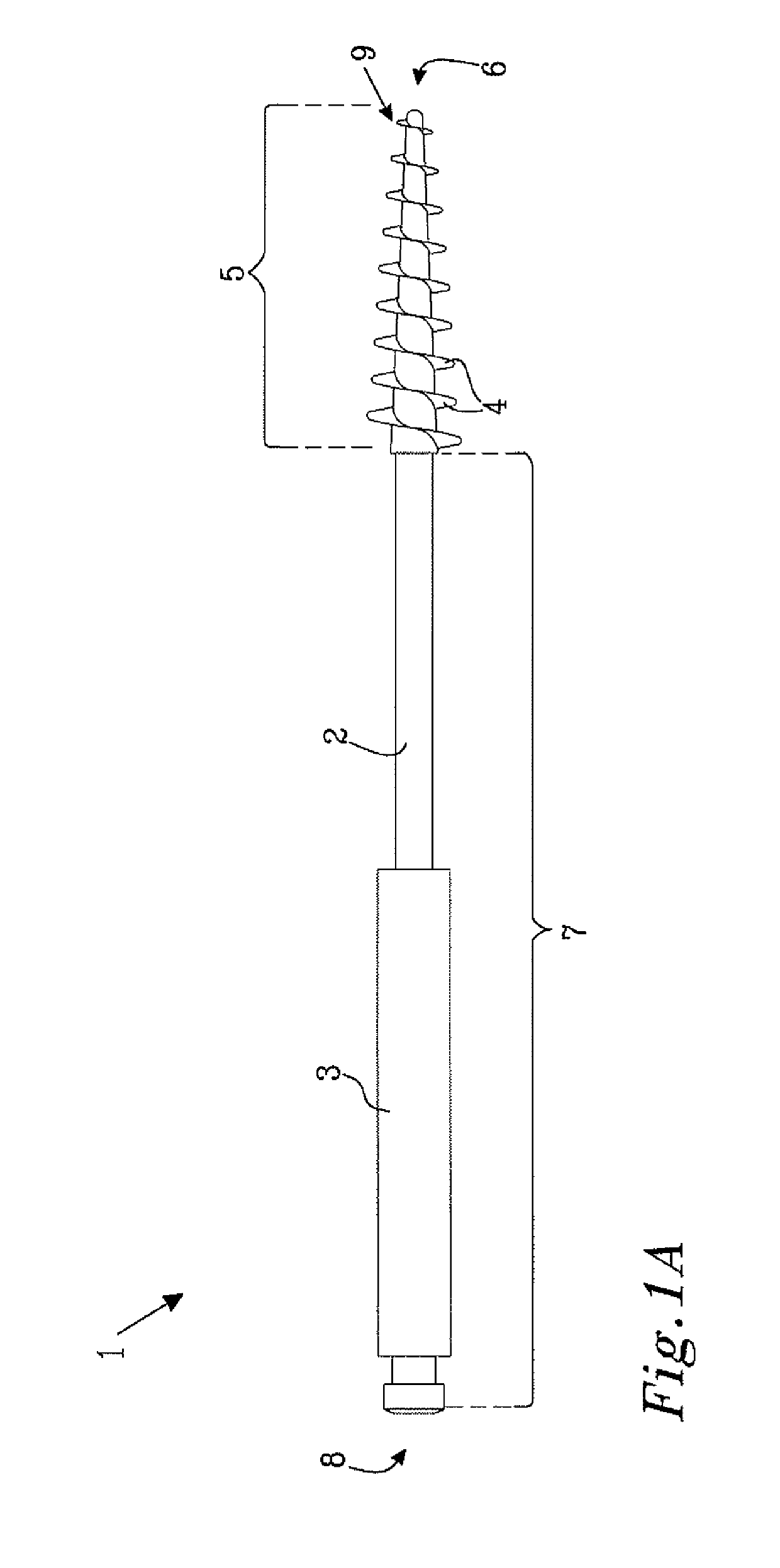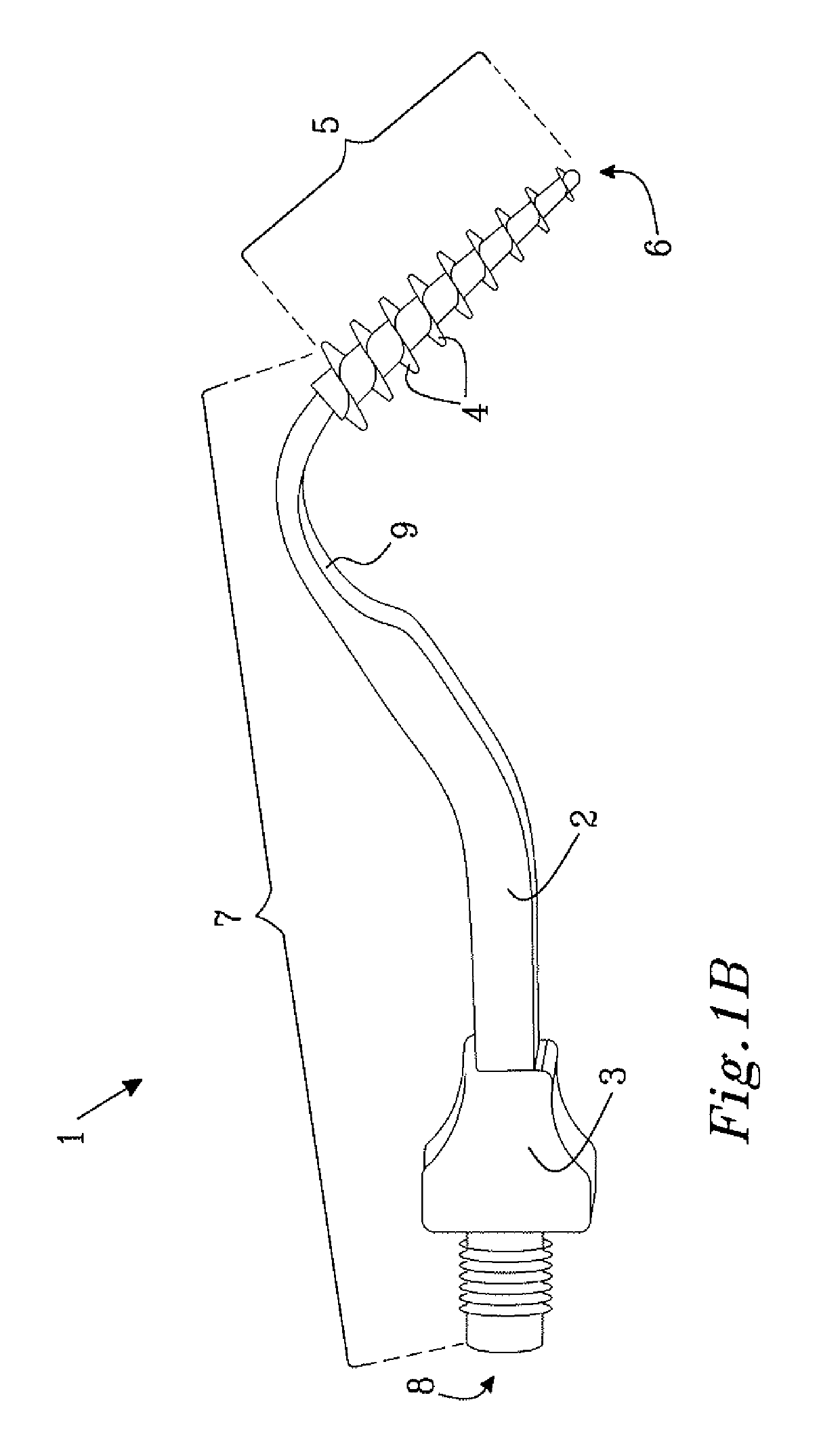Bio-resorbable debride or implant cleaning tool and method of manufacturing the same
a bioresorbable debride and cleaning tool technology, applied in the direction of dental tools, tooth cleaning, brushes, etc., can solve the problems of no predictable treatment strategy for peri-odontal disease healing, deepening of the space between the root of the tooth and the gum tissue, and destroying the supporting tissues of tooth support tissues, so as to reduce the risk of negative reactions in the body, improve the outcome of mechanical debridement and maintenance procedures, and minimize the effect of risk
- Summary
- Abstract
- Description
- Claims
- Application Information
AI Technical Summary
Benefits of technology
Problems solved by technology
Method used
Image
Examples
example 1
[0169]An injection moulded debridement tool for cleaning of exposed dental implant surfaces according to FIG. 1A was produced using injection moulding with a mixture of ultrapure, pre-dried (less than 0.003% humidity), 85 wt % poly(L-lactide) (LPLA) and 10 wt % poly(DL-lactide) (DLPLA) and 5 wt % PGA (all from Polysciences GmbH, Eppelheim, Germany). The mixture of polymers were melted at 180 degrees Celsius and injected into a pre-made form under pressure. The stem, made of nitinol attached to a hand piece connector made of surgical steel and welded in place, was present in the casting form so that the polymer working end of the debridement tool is casted directly around the stem. After injection the form with the injected material in place, was cooled down to room temperature, and the instrument, now consisting of a nitinol stem with a biodegradable working end attached, was removed from the cast. The device was then packaged in a gas-tight container for sterilization and storage b...
example 2
[0170]An injection moulded debridement tool for cleaning of exposed dental implant surfaces according to FIG. 1A was produced using injection moulding with a mixture of ultrapure, pre-dried (less than 0.003% humidity), 85 wt % poly(L-lactide) (LPLA) and 15 wt % poly(DL-lactide) (DLPLA) (all from Polysciences GmbH, Eppelheim, Germany). The mixture of polymers were melted at 180 degrees Celsius and injected into a pre-made form under pressure. The stem, made of nitinol attached to a hand piece connector made of surgical steel and welded in place, was present in the casting form so that the polymer working end of the debridement tool is casted directly around the stem. After injection the form with the injected material in place, was cooled down to room temperature, and the instrument, now consisting of a nitinol stem with a biodegradable working end attached, was removed from the cast. The device was then packaged in a gas-tight container for sterilization and storage before clinical ...
example 3
[0171]An injection moulded debridement tool for cleaning of exposed dental implant surfaces according to FIG. 1A was produced using injection moulding with a mixture of ultrapure, pre-dried (less than 0.003% humidity), 58 wt % poly(L-lactide) (LPLA) and 42 wt % PGA (all from Polysciences GmbH, Eppelheim, Germany). The mixture of polymers were melted at 170 degrees Celsius and injected into a pre-made form under pressure. The stem, made of PVDF attached to a hand piece connector made of surgical steel and glued and press-fitted in place, was present in the casting form so that the polymer working end of the debridement tool is casted directly around the stem. After injection the form with the injected material in place, was cooled down to room temperature, and the instrument, now consisting of a nitinol stem with a biodegradable working end attached, was removed from the cast. The device was then packaged in a gas-tight container for sterilization and storage before clinical use.
PUM
| Property | Measurement | Unit |
|---|---|---|
| length | aaaaa | aaaaa |
| length | aaaaa | aaaaa |
| diameter | aaaaa | aaaaa |
Abstract
Description
Claims
Application Information
 Login to View More
Login to View More - R&D
- Intellectual Property
- Life Sciences
- Materials
- Tech Scout
- Unparalleled Data Quality
- Higher Quality Content
- 60% Fewer Hallucinations
Browse by: Latest US Patents, China's latest patents, Technical Efficacy Thesaurus, Application Domain, Technology Topic, Popular Technical Reports.
© 2025 PatSnap. All rights reserved.Legal|Privacy policy|Modern Slavery Act Transparency Statement|Sitemap|About US| Contact US: help@patsnap.com



